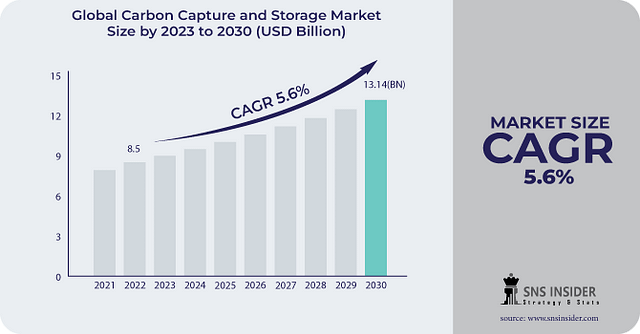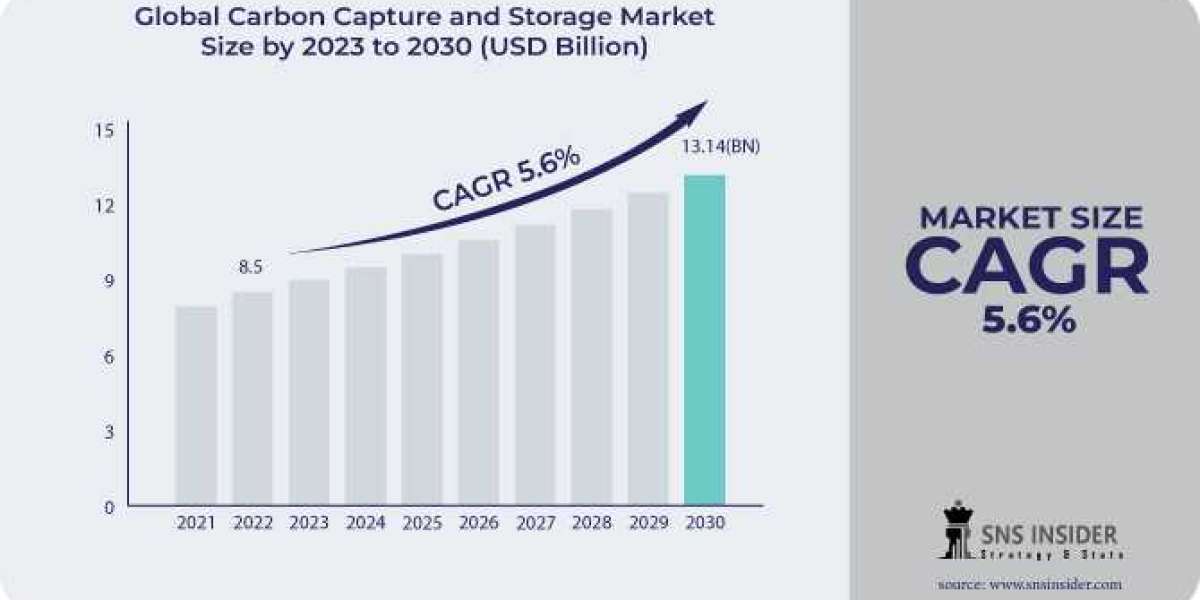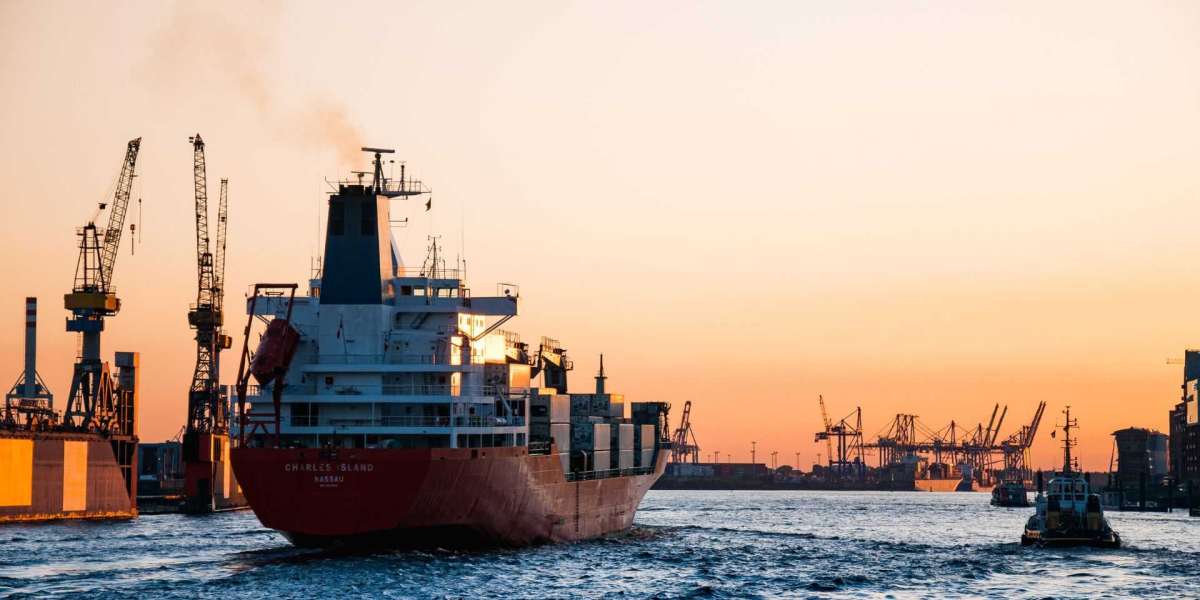
The Carbon Capture and Storage Market size was valued at USD 8.5 billion in 2022 and is expected to grow to USD 13.14 billion by 2030 with a growing CAGR of 5.6% over the forecast period of 2023–2030.
Market Overview
Carbon Capture and Storage (CCS) is a vital technology designed to mitigate climate change by capturing carbon dioxide (CO2) emissions at the source, transporting it, and storing it underground to prevent its release into the atmosphere. CCS is considered an essential part of achieving net-zero carbon goals, particularly for industries and power generation sectors where emissions are difficult to eliminate completely. The CCS market is poised for substantial growth over the next decade as governments, businesses, and industries intensify efforts to decarbonize and combat global warming.
Key Market Segmentation
The Carbon Capture and Storage market is segmented based on service type, technology, end-user industry, and region.
By Service
- Capture:
The capture service is the first step in CCS, where CO2 is captured from power plants or industrial processes. This service is critical to ensuring that CO2 is separated from flue gases before it can be transported and stored. Different capture technologies are used, including chemical looping and solvents. - Transportation:
Once CO2 is captured, it is transported to suitable storage sites through pipelines, ships, or other transportation methods. The transportation service is essential to connect CO2 capture sites with storage or utilization sites. - Utilization:
CO2 can be utilized in various industries, such as enhanced oil recovery (EOR), chemicals manufacturing, and others. This segment focuses on the use of captured CO2 for commercial purposes, which can help offset some of the costs associated with CCS projects. - Storage:
The storage service involves injecting CO2 into deep geological formations, such as depleted oil and gas reservoirs, deep saline aquifers, and other geological structures that can securely hold CO2 over the long term. Storage is a key element in the long-term success of CCS systems.
By Technology
- Chemical Looping:
Chemical looping combustion (CLC) is a promising technology that allows CO2 to be captured during combustion by separating oxygen and fuel into two steps. This technology is being researched for its efficiency and ability to reduce the energy penalties associated with conventional CO2 capture methods. - Solvents Sorbents:
Solvents and sorbents are widely used in post-combustion capture technologies to absorb and remove CO2 from flue gases. These chemicals are capable of binding with CO2, allowing it to be separated and collected for transportation and storage. - Membranes:
Membrane technology is emerging as a potential solution for CO2 separation. Membranes can selectively allow CO2 to pass through while blocking other gases. This technology is gaining attention for its low energy requirements and scalability. - Others:
Other technologies such as adsorption and cryogenic separation are also being explored for CO2 capture. These technologies are designed to be more energy-efficient or to offer new methods of capturing CO2 in challenging environments.
By End-User Industry
- Oil Gas:
The oil and gas industry is one of the largest consumers of CCS technologies, utilizing captured CO2 for enhanced oil recovery (EOR) projects. CCS offers both environmental benefits and economic incentives in this sector, making it a key driver of the market. - Power Generation:
Power generation, particularly from fossil fuel-based plants, is a major source of CO2 emissions. The adoption of CCS in power plants is critical for reducing emissions from coal and natural gas-fired plants, helping countries meet climate goals. - Chemicals Petrochemicals:
The chemicals and petrochemical industries are high CO2 emitters due to the energy-intensive nature of their processes. CCS technologies are being applied in these sectors to capture emissions from both production processes and energy use. - Cement:
The cement industry is one of the largest industrial sources of CO2 emissions. CCS is seen as a crucial solution for decarbonizing cement production, which is a highly carbon-intensive process. Cement plants are increasingly adopting CCS technologies to comply with global emissions reduction goals. - Iron Steel:
The iron and steel industries are also major contributors to industrial emissions. With the development of CCS technologies, these sectors are exploring ways to reduce their carbon footprint and implement sustainable practices. - Others:
Other industries, including pulp and paper, food and beverages, and other manufacturing sectors, are beginning to adopt CCS to reduce emissions and comply with environmental regulations.
By Region
- North America:
North America, especially the United States and Canada, is a key region in the CCS market. The US is leading in CCS development, with several large-scale projects underway and significant investment in CCS research and infrastructure. Canada has also become a pioneer in CCS with several government-backed initiatives focused on the oil sands and other industries. - Europe:
Europe is a leading region for CCS adoption, with countries such as Norway, the Netherlands, and the UK heavily investing in large-scale CCS projects. The European Union’s ambitious carbon reduction targets are driving the demand for CCS technologies in the region. - Asia-Pacific:
Asia-Pacific, particularly China and Japan, is seeing rapid growth in the CCS market. China, as the world’s largest emitter of CO2, is actively investing in CCS technologies to address its emissions challenges. Japan is also increasing its focus on CCS to meet its climate goals. - Middle East Africa:
The Middle East and Africa are emerging markets for CCS, with countries like Saudi Arabia, the UAE, and South Africa exploring CCS solutions. These regions are focused on using CCS for enhanced oil recovery (EOR) and reducing emissions from their oil and gas industries. - Latin America:
Latin America is gradually adopting CCS, particularly in countries like Brazil and Argentina. The oil and gas industry in this region is expected to be a major driver of CCS adoption, particularly for EOR projects.
Market Trends and Growth Drivers
- Government Support Regulations:
Governments worldwide are implementing stricter carbon emission regulations, setting ambitious targets for net-zero emissions. Many countries are offering financial incentives, tax credits, and subsidies to promote the development of CCS technologies. - Technological Innovations:
Ongoing advancements in CCS technologies, such as chemical looping and membrane filtration, are making the capture process more energy-efficient and cost-effective, accelerating the adoption of CCS across various industries. - Rising Demand for EOR:
Enhanced oil recovery (EOR) using captured CO2 is a major driver of the CCS market, offering financial returns and facilitating oil production in mature oil fields. - Increasing Industrial Emissions:
Heavy industries such as cement, iron steel, and chemicals are under increasing pressure to reduce emissions. CCS is viewed as a viable solution to meet both regulatory requirements and sustainability goals.
Read Complete Report Details of Carbon Capture and Storage Market 2023–2030@
https://www.snsinsider.com/reports/carbon-capture-and-storage-market-3291
Conclusion
The Carbon Capture and Storage (CCS) Market is on track for significant growth over the forecast period, driven by technological advancements, rising demand for emission reductions, and government support. As part of the global strategy to address climate change, CCS technologies are becoming crucial in reducing industrial emissions across multiple sectors. With substantial investment in research and infrastructure, the CCS market will continue to evolve and play a key role in achieving a sustainable, low-carbon future.
About Us:
SNS Insider is a global leader in market research and consulting, shaping the future of the industry. Our mission is to empower clients with the insights they need to thrive in dynamic environments. Utilizing advanced methodologies such as surveys, video interviews, and focus groups, we provide up-to-date, accurate market intelligence and consumer insights, ensuring you make confident, informed decisions.
Contact Us:
Akash Anand — Head of Business Development Strategy
info@snsinsider.com
Phone: +1–415–230–0044 (US) | +91–7798602273 (IND)














